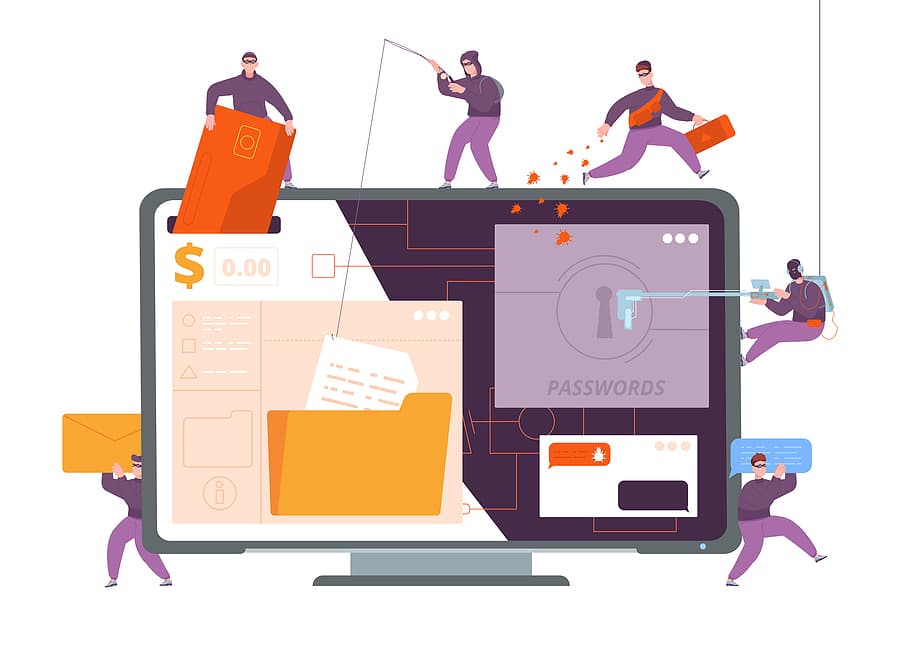
If your business offers subscriptions, chances are, you’re thriving. From meal boxes to streaming services to digital news, many customers became avid subscribers amid the pandemic. Now, 75% of all consumer brands plan to offer a subscription by 2023. Unfortunately, fraud always follows success.
Ravelin surveyed over 1,700 fraud professionals from online businesses with over $50 million in revenue from a variety of eCommerce industries. The Subscription Merchant Report 2022, focuses on data from entertainment streaming, physical goods, and other subscription businesses, like digital media.
You’ll have to read the report for the full global data and insight, but the following is an overview of some of the key findings for 2022.
Subscriptions are booming in 2022
The subscription economy took off at the start of the pandemic. Two years later, customers still can’t get enough of the subscription economy. Every business has had a unique experience, but there are clear industry trends. So how have different subscription verticals experienced the boom?
Online news and digital media demand is high
According to Ravelin’s survey, 72% of digital media subscription merchants (e.g. online newspapers) say the pandemic boosted business. In 2020, customers needed reliable news about Covid-19, the U.S. election, and other world events more than ever. But news outlets couldn’t print or circulate newspapers, so digital news subscriptions became a lifeline.
In 2022, customers have fully adapted to consuming news on a device. Since 2020, subscribers to digital media have grown a whopping 300%. English language publishers now boast more than 23 million digital subscribers. And the New York Times’ digital-only subscribers have increased more than tenfold. The future of news is undoubtedly digital.
The subscription box frenzy continues
Physical goods subscriptions (aka. subscription boxes) were ‘trending’ during lockdowns. In 2020, 68% of customers ordered subscription boxes for household staples like food and cleaning products. And 55% signed up to ‘treat yourself’ deliveries to ease lockdown blues.
Demand for subscription boxes is still high. Around 61% of subscription merchants surveyed say order volumes are up in 2022, proving that increased sales weren’t just a lockdown fad.
But this means competition is growing fast, and almost a third of physical goods subscription companies say it’s starting to affect business. And with 75% of traditional retailers planning to offer a subscription by 2023, the market will only become more crowded.
Customers can’t get enough of entertainment streaming
Let’s not forget entertainment/streaming subscriptions. Around 65% of the industry said the pandemic had a positive impact on business, thanks to their offerings designed for staying at home. In 2020, the number of streaming subscribers passed 1 billion for the first time in history.
Streaming subscriptions will go from strength to strength in the near future. Industry leader Netflix experienced a setback at the start of the year with the first subscriber loss in its history. However, this was likely due to password sharing, not dwindling demand. Video streaming is now thought to make up around 82% of Internet traffic meaning there’s plenty of business to go around.

But fraud always follows success…
Subscriptions are becoming hotter targets for fraudsters. Around 60% of subscription businesses report an increase in online payment fraud in the past 12 months — above the eCommerce average.
And it’s not just traditional card-not-present fraud that’s on the rise. Around 56% of subscription merchants are seeing new threats emerge. So which specific fraud types and unprofitable behaviors are increasing the most?
Subscription account takeover is on the rise
Account takeover isn’t a new threat. But it’s spreading in the subscription industry. Almost 60% of subscription merchants reported an increase in account takeovers in the past year; nearly a quarter of them noticed a significant increase.
Ravelin asked subscription merchants to estimate how many wide-ranging account takeover attacks they face every month — those that are highly disruptive. In 2022, the estimate is at least three high-level threats every month.
Subscription customer accounts can be very lucrative targets. For some businesses, credit can build over time, making accounts a goldmine for hackers. If customers don’t often check their subscription account balance, fraudsters can easily get away with it.
Widespread password sharing fuels hackers in 2022
Entertainment streaming subscriptions are under fire from account takeover fraud. They’ve seen 40 high-impact attacks in the past year on average — more than any other Subscription vertical. But why?
Customers want access to their favorite TV shows and movies at a discount. So they might be swayed by hackers offering streaming services for less. Hackers can take over an account and then resell the account details online. The fraudster makes a profit, while the customer believes they get a cheap deal.
These account takeovers are made easier by widespread password sharing. Password sharing involves multiple customers using the same login details to avoid paying or splitting the cost of a subscription. Customers often set obvious passwords in this scenario, making the accounts easier to hack.
The simple solution is to crack down on password sharing, right? Well, it might not be so straightforward. If password sharing becomes more difficult, customers may be more likely to buy a fraudulent account to save money. But a lack of password sharing regulation can mean breached accounts and a damaged reputation. Finding a balance? It’s difficult.
Big names like Netflix and Disney+ are struggling with this issue. Netflix hit headlines earlier this year, estimating that 100 million of their households use a shared password. And a week after Disney+ launched, thousands of their passwords were sold on the dark web.
Recurring payments open the door to friendly fraud
Friendly fraud is a bigger risk to subscription merchants than in other industries. Over 50% of physical goods subscription merchants have seen friendly fraud rise in 2022 — more than the rest of eCommerce merchants.
Recurring payments invite unnecessary disputes. Here are common reasons why your customers might go down the friendly fraud route…
- Set it and forget it – Especially with longer subscription periods, a customer might forget they signed up for an annual subscription a year ago. When the renewal date comes around, they’re surprised to see the money leave their account and will likely dispute the transaction.
- Is it the billing date already? – Subscribers may intend to cancel the subscription before their next billing date, but forget. Instead of contacting the customer service team and asking for a refund, they’ll likely just file a dispute.
- Buyers remorse – Thought to account for 75% of subscription disputes, a customer might regret signing up if it was an impulse decision or might need the cash more than they realized.
- Free stuff! – Customers might want to try their luck at getting your product or service for free after use. A dispute is easy for a customer to make and hard for a business to disprove.
All of these are examples of friendly fraud that can increase the chargeback rate and put companies at risk of fines.
Promo and refund abuse are increasing concerns
Refund and promo abuse (a.k.a policy abuse) are growing concerns for the subscription industry. Around 50% of subscription businesses say policy abuse is a top business risk and 60% have noticed a recent increase in activity. Subscription companies are especially vulnerable, as offering generous refunds to avoid disputes, and competitive promotions to win customers are standards within the industry.
Subscription businesses are targets for organized promo abuse and reselling schemes. For entertainment and non-physical goods, fraudsters offer customers online access at a discount. They can make new accounts and continuously sign up to free trials on a customer’s behalf.
Physical goods subscriptions saw refund abuse soar amid the pandemic due to doorstep deliveries. Customers could easily claim their box ‘never arrived’ (even though it did) to get a refund and keep the goods for free. If every box is worth $20, that’s a lot of money left on the doorstep. Refund reasons can be difficult to disprove, so abuse can quickly spiral out of control and impact the bottom line.

Subscription merchants are investing in fraud prevention
Fraud might be rising, but subscription merchants are getting ready to fight back. Ravelin asked subscription business leaders about their fraud strategy for 202. The following are some of their responses.
Subscription business leaders are increasing fraud budgets
Out of every eCommerce industry, subscription businesses were the most likely to say they expect budgets to increase. Eighty-four percent of subscription merchants plan to spend more on fraud prevention in 2022, compared to the 78% average across eCommerce. And 21% expect a significant increase.
Industry-wide fraud team recruitment push
Fraud teams are expected to grow across eCommerce, but none more so than subscription businesses. Eighty-six percent of subscription companies expect fraud team growth in 2022, above the survey average of 78%. Entertainment streaming subscriptions expect 90% growth in fraud team hiring.
Why is there a newfound focus on fraud?
Tackling fraud is often at the bottom of the to-do list when a business is growing. So why the change? It seems the perception of the fraud team has improved in recent years. A massive 88% of subscription businesses said they’ve noticed a business-wide improvement since the Covid-19 outbreak. This is over the survey average of 82%.
The pandemic drove customers online, so business leaders shifted their focus to online operations — including the fraud team. If fraud teams were overstretched or ill-equipped, it became painfully obvious. And many were.
But you could be missing a key tool
Ravelin’s data shows there may be gaps in the defenses of many subscription companies. Graph networks serve as a great example. Only 33% of subscription businesses are currently using this tool.
Graph networks are well-suited to subscription merchants, as they help easily uncover suspicious networks of stolen cards or devices, and highlight mass reselling schemes. Large, fast-growing, or high-risk customer networks become clearly visible, enabling teams to take action against them. Without them, it’s harder to spot patterns in the data, allowing fraud to slip through the net.
Refine your fraud prevention strategy for success
Even though trends suggest continued growth in the subscription industry, now is not the time to get too comfortable. The fraud landscape is constantly changing and online threats are rising. It’s important to stay agile and continue to monitor ways to prevent fraud. For more information on fraud prevention, contact Ravelin. And don’t forget to download the full report for comprehensive advice on fraud strategy.








